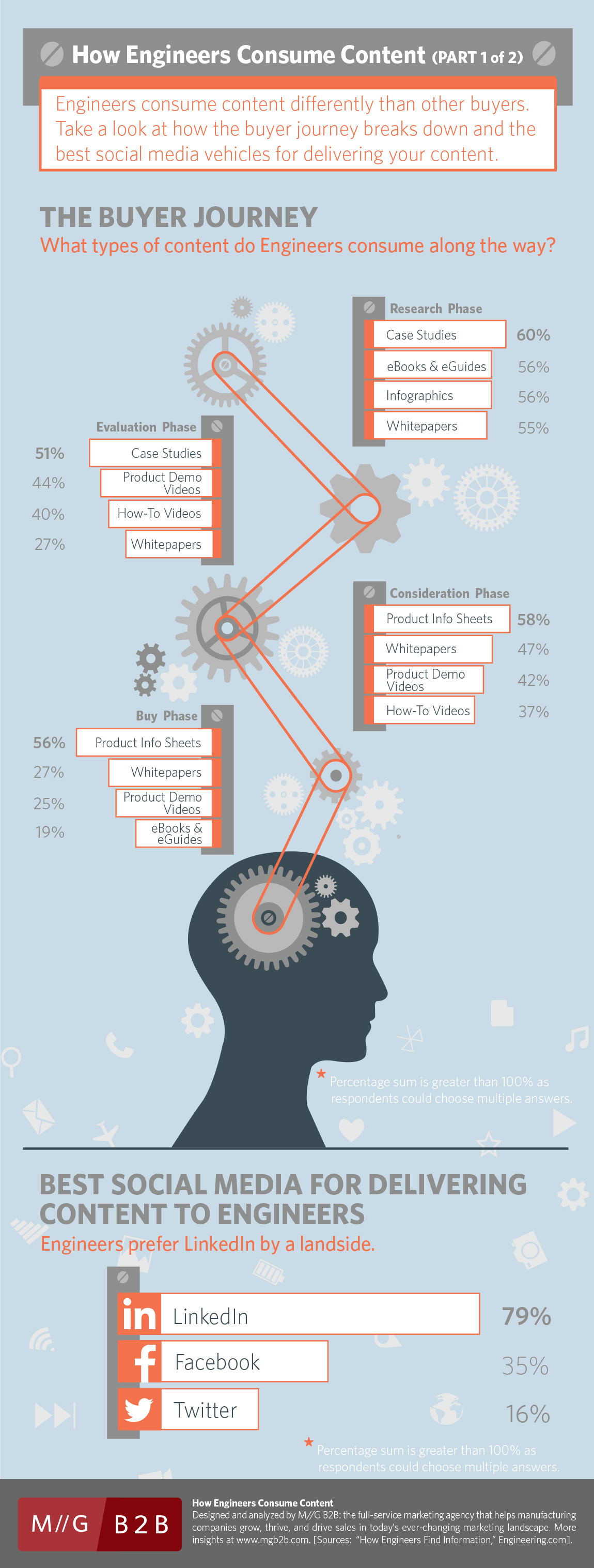Repurposing and Repackaging B2B Content to Keep Your Audience Engaged
by MGB2B
 Your brand has many needs: developing products that meet the needs of your clients, keeping your clients happy and satisfied with your offerings, maintaining a steady workflow between your marketing and sales teams, staying one step ahead of the competition… the list goes on and on. So when it comes time to develop content like white papers, blogs, bulletins, newsletters, and more, it’s no wonder that task can often fall by the wayside. Your brand’s own content can sometimes take a backseat to the hundreds of other priorities you and your team manage on a day-to-day basis.
Your brand has many needs: developing products that meet the needs of your clients, keeping your clients happy and satisfied with your offerings, maintaining a steady workflow between your marketing and sales teams, staying one step ahead of the competition… the list goes on and on. So when it comes time to develop content like white papers, blogs, bulletins, newsletters, and more, it’s no wonder that task can often fall by the wayside. Your brand’s own content can sometimes take a backseat to the hundreds of other priorities you and your team manage on a day-to-day basis.
You Should Know Two Things About Your Struggle with Content:
- It’s okay!
- There’s a way to create new content to distribute to your audience without actually creating new content.
You Might Be Thinking… “That Makes No Sense.” But Hear Us Out:
By taking existing long-form content you’ve created, like white papers, tech bulletins, or published studies and turning them into shorter, eye-catching, digestible content like blogs, infographics, and videos, you’re still creating new content without putting in as many man-hours that the former requires.
Writing something like a white paper takes a significant amount of time, research, and understanding of the subject. Your audience appreciates these types of content, but in an age where “content is king” and attention spans seem to shrink by the day, sometimes they don’t always reach the audience they should. By taking your extensive white paper and breaking it down section by section, you’re providing your audience with the same content, just in a form they haven’t seen yet. So you might capture the attention of someone who doesn’t have the time or patience to read a full white paper. As an added bonus, when you create these types of content and post them on your website and various social channels, you can link back to the longer-form content (and require an information capture to reveal it), so you’re accomplishing two goals with one post.
So How Do You Evaluate B2B Content for Repurposing?
Choosing the kind of content you want to turn into social-friendly posts is the biggest challenge you might face. When starting out, you’ll want to evaluate your library for two things. The first being, ease of digestion. What we mean when we say that is: how complicated is the message we’re trying to get across, and how difficult will it be to convey that in an infographic, video, or blog? The second thing to evaluate is time. How long will it take us to turn this white paper into something we can get out to the masses?
If you need to hold multiple brainstorming sessions, followed by multiple rounds of development, followed by multiple rounds of edits, it might be best to leave that content as-is. If you have something that you already know can be broken down easily (and quickly!), start there. As time goes on, you can hone your skills, and eventually tackle those harder-to-understand pieces. But for now, start slow, and be sure you’re crafting messages that will resonate with your audience.
Continue ReadingINFOGRAPHIC: How Engineers Consume Content
by MGB2B

Ever want to see inside the mind of an engineer? If you run the marketing department of a manufacturing company, the answer is probably a resounding “yes.”
This infographic – Part 1 of a 2-part series – takes a look at how engineers approach content. In particular, it explores which content they consume during the Buyer Journey and where they consume it. You’ll see how the Journey is broken down into four phases: Research, Consideration, Evaluation, and Buy. And content is consumed differently in each phase.
It’s likely no surprise that Case Studies are consumed more heavily in an engineer’s decision-making process earlier in the Buyer Journey. Or that Product Info Sheets are more influential later in the process.
But it’s worth noting how different types of video work better in different phases. And just how much engineers prefer LinkedIn over other social platforms. Take a look at the full infographic to get a better look at the engineer’s decision-making process. It will give you great insights as you fine-tune your Content Marketing Plan in the second and third quarters of 2018.
Read the Full Infographic on How Engineers Consume Content Below:
(And stay tuned for Part 2… coming soon.)
Continue ReadingB2B Myth of the Week: Social Media Content Should Be All-Business
by MGB2B
Myth: Social Media Content for B2B Brands Needs to be All-Business
Fact: Social Media is the Perfect Channel to Show Brand Personality
Social media content for B2B brands must revolve around statistics, numbers, and charts. Right? Wrong. While buyers do need practical information, it’s also necessary to humanize your brand. To do so, make sure some of your content resonates with your buyer’s emotions. After all, at the end of the day, it’s a human making purchase decisions. Need help getting started? Here’s three jumping off points to get your creative content up and running:
-
Tell Stories
Storytelling is a simple way for buyers to relate to the brand. This, in turn, strengthens the relationship between brands and buyers. By sharing stories on social media, your company has a chance to develop a personality that strikes a chord with your audience. According to a study at Stanford University, information shared through stories is remembered 22 times more than facts alone. So what kind of stories can you tell? Try a testimonial from a satisfied client. Polish up your brand creation story. Or consider a story that demonstrates how your product or service can solve a problem.
-
Use Humor.
People often assume that social media content for B2B brands is limited to stiff and serious posts. Including humorous content is a great way to get people interested in what your brand is doing. Let’s face it, most people don’t expect B2B brands to be funny. Use that to your advantage. Incorporating humor can be an extremely successful way of getting attention from potential buyers. There are plenty of ways to mix a little humor into your content calendar. Get creative with photos and videos that your brand is sharing. Is there something people find confusing about your brand? Poke fun at yourself (like MailChimp does). Or maybe there’s a common challenge in your industry you can make light of. A little levity can go a long way in ingratiating your brand to your audience.
-
Show the Brand’s Personality.
Developing a personality that is associated with your brand has way more impact than just facts and numbers. Audiences remember personalities over stats. This one’s tricky – it’s easy for B2Bs to fall into the same-old personality traits: committed, quality-oriented, eco-friendly, etc. But who is your brand really? And how does that resonate with your audience? Make yourself memorable. Think about what ultimately motivates your brand, and develop your character from there. Is your brand personality wise? An explorer? A trusted advisor? Do you aim to challenge or inspire? Whatever you feel your brand is, infuse those characteristics into your content (not to mention your ad copy and visuals) and stand out from the pack.
Even though it seems like social media content for B2B brands is limited, it’s just the opposite. It’s an opportunity to showcase just what makes your brand tick. While facts and stats provide the proof, your brand personality will resonate far longer.
Continue Reading

